
The Business of Fashion
Agenda-setting intelligence, analysis and advice for the global fashion community.

Agenda-setting intelligence, analysis and advice for the global fashion community.
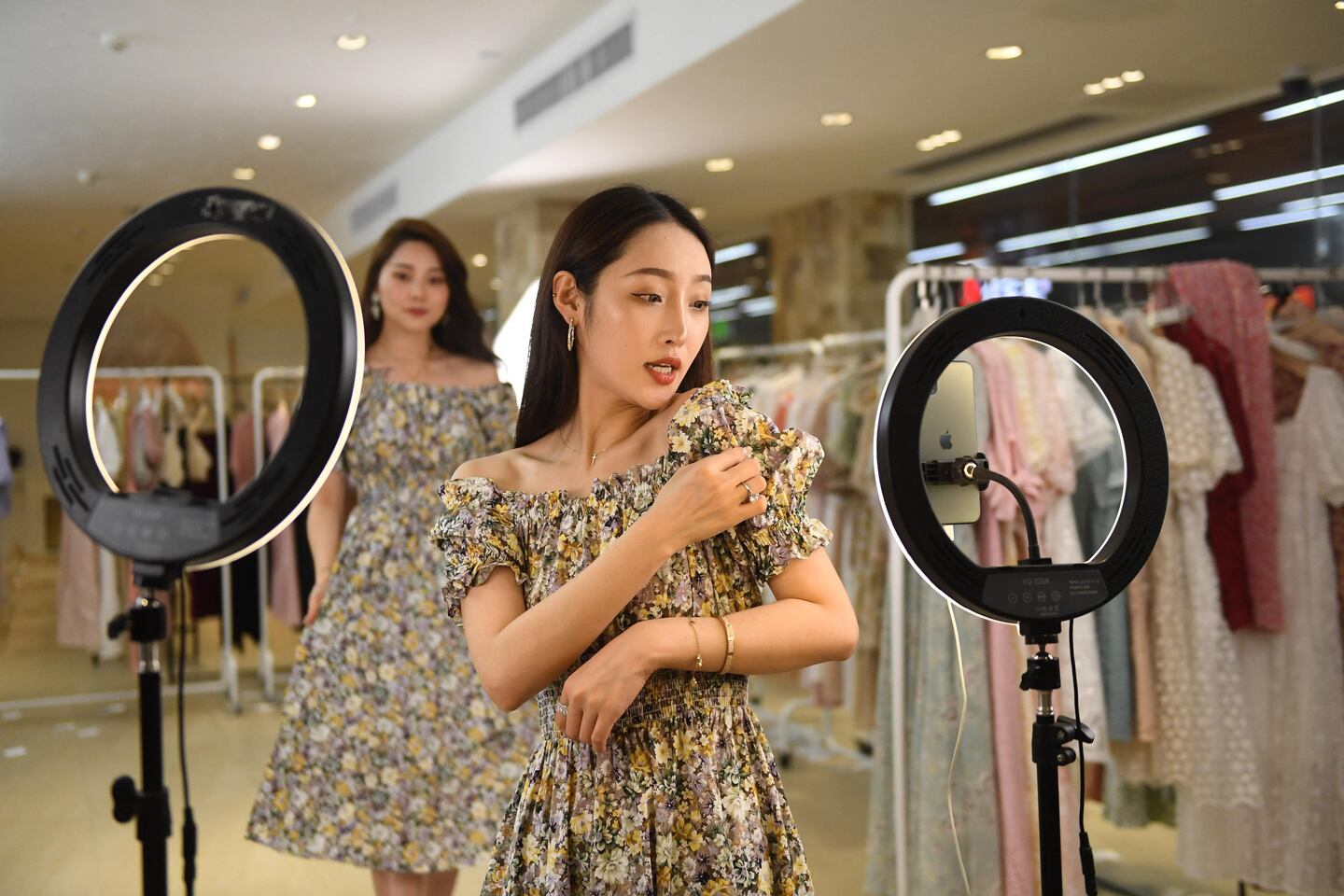
LONDON, United Kingdom — As businesses across the world buckle under the strain that Covid-19 has put on retail, tourism and manufacturing, the Chinese market has emerged a beacon of hope.
In May, the country's retail sales hit -2.8 percent year-on-year — an uptick from -15.8 percent in March and February's -20.5 percent plunge, according to the National Bureau of Statistics. Meanwhile, luxury players from Burberry to Tiffany are either seeing or expecting double digit growth in the market and a number of local digital players like Tmall have witnessed a surge in demand on burgeoning channels like livestreaming.
With economic recovery much slower or subdued elsewhere, China’s importance to the global fashion industry is arguably higher than ever. The danger now, say analysts, is that international brands are looking for a saviour in the crisis. Some now see the market through rose tinted glasses and have fostered unrealistic expectations.
But even in China, winners are the exception rather than the rule. “Covid-19 has absolutely had a negative impact on the business environment in China,” said Ben Cavender, managing director at China Market Research Group.
ADVERTISEMENT
Last month, Hong Kong retailer I.T more than doubled its estimated net loss for 2020 to $90 million. Shandong Ruyi — the textile conglomerate and SMCP owner that once harboured ambitions to become China’s answer to LVMH — posted a 13.4 percent drop in gross revenue from the same period last year in its 2019 annual report. Mass-market apparel players like Metersbonwe and Joeone have seen better days too: the former reported 800 million yuan (around $113 million) in annual losses and the latter a 70 percent decline in Q1 net profits.
The struggles of these and other companies point to significant challenges and profound new changes in the world’s biggest market for luxury and apparel. While it’s clear that some are shifts that were already underway accelerated by the pandemic, others are not. China will have its own “new normal” too. Here’s what to expect.
The Digital Arms Race, On Steroids
Even in a rapidly advancing digital market, there are outliers who failed to catch up. Take Paris Spring department store, which closed its Hongkou branch's doors in April. Companies that have fared best, like Nike and Li Ning, were already aggressively spearheading digital approaches before China's outbreak. Post-pandemic, the gap between winners and losers will only widen as e-commerce and O2O (online to offline) strategies become more critical.
"Going digital seems to be the only bright spot for many retailers amid the current pandemic, but this isn't something new that I.T has picked up," said the group's Chief Commercial Officer Deborah Cheng, citing social unrest in its native Hong Kong as an added upset to its bottom line. Alongside its own multi-brand stores, I.T operates stores across Asia for or through joint ventures with the likes of Comme des Garçons, Galeries Lafayette and Dover Street Market.
Beauty chain Sasa — which saw first-quarter sales drop over 56 percent — is in a similar predicament as the city’s lack of mainland shoppers hit brick-and-mortar-dependent retailers especially hard.
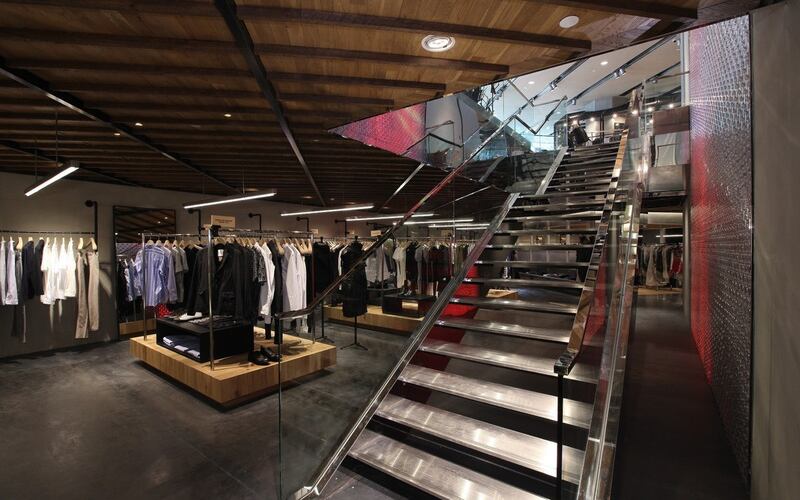
Inside I.T's multi-brand store in Hong Kong | Source: Courtesy
Looking ahead, Cheng adds that I.T will need to focus on digital platforms targeting younger audiences, like Bilibili and Xiaohongshu. But Pablo Mauron, the Shanghai-based managing director of Digital Luxury Group, warns that particularly for multi-brand retailers like I.T, the climb to building a successful online presence has never been steeper.
ADVERTISEMENT
"Multi-brand business has always been about offline channels," Mauron said. He points out that for most brands, the main avenue to digital success in China is via Alibaba-owned Tmall. But save for Net-a-Porter — the product of a joint venture between Richemont and Alibaba in China and therefore a "special case" — Tmall's infrastructure is catered to standalone brands.
For any business, the cost of success in China is only rising. “E-commerce is a vicious cycle as it takes money to make money,” Mauron says. And as a growing number of businesses invest in O2O strategies, even physical channels will need a digital touch to have an edge over the competition.
Opening digital flagships, building brand equity and awareness and taking part in promotional shopping events on platforms like Tmall, Xiaohongshu and WeChat are table stakes — strong brands can afford to make extra pushes and investments into new formats like livestreaming now, but ailing players looking to e-commerce as a way to recover from the pandemic won’t have it easy. “The opportunity is growing but the gap to reach the opportunity is growing too,” Mauron added.
An End to “The More, The Merrier”
The pandemic accentuated the risks of prioritising growth over value. Be it brand portfolios or real estate, the era of blind aggressive expansion in China is truly over.
“Shandong Ruyi is kind of a cautionary tale,” said Cavender, referring to the company’s portfolio composition. “Just because a brand is European is no longer a guarantee that Chinese consumers are going to buy it. If the product isn't interesting, if the retail experience isn't good then it doesn't matter if the brand has heritage.”
Shandong Ruyi — which currently owns over 20 brands including the SMCP trio (Sandro, Maje, Claudie Pierlot), Aquascutum and Gieves & Hawkes — had already planned to slow down on investments in 2020, a spokesperson tells BoF. Post-pandemic, the group plans on harnessing its acquisitions in tech and innovation to strengthen its current portfolio. “We will use big data and other means to build a connection between [our innovation, manufacturing and brand businesses], and finally build an ecosystem spanning the whole value chain.”
Just because a brand is European is no longer a guarantee that Chinese consumers are going to buy it.
However, the payoff for such activities isn’t usually immediate and companies like Shandong Ruyi are dealing with urgent issues.
ADVERTISEMENT
The group isn’t the only one handling lacklustre investments. Rival Fosun International is also feeling the heat from its stake in jewellery brand Folli Follie, which is shuttering all stores in Hong Kong and has applied for liquidation, according to local media. Lanvin and Wolford are among the other brands in Fosun’s portfolio, though it has slowed down on European fashion acquisitions in 2019.
For Chinese companies where M&A is still prudent, Mauron suggests that investment targets will now be closer to home. "Beauty is leading the way in a lot of categories and we've seen a lot of local beauty brands merging thanks to strong product, cultural relevance and a disruptive approach to the market." Chinese equivalents to Glossier, like Perfect Diary and Hedone, stand to benefit.
Streamlining for Sustainability
The pandemic has only made clearer the “winner takes all” nature of China’s apparel sector. And like the country’s major conglomerates, other struggling fashion groups are overdue for an overhaul.
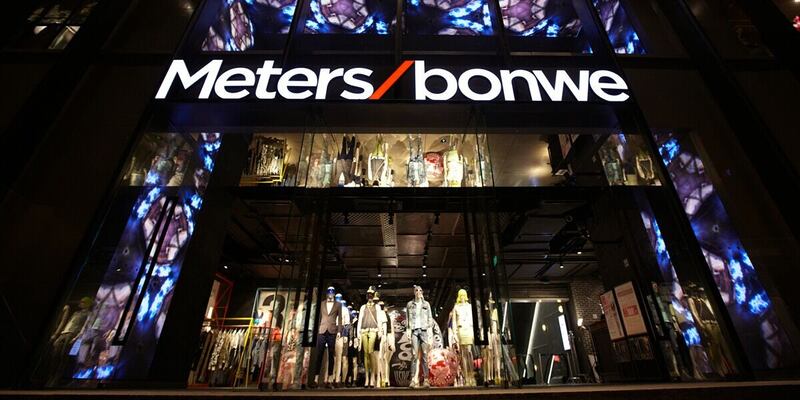
A Metersbonwe store | Source: Courtesy
Back in 2017, mass-market player Metersbonwe incubated and launched five brands: Mtee, ASelf, Novachic, Hystyl and Newear, while investing in developing Me&City, Moomoo and Me&City Kids. After it began recording losses in the first half of 2019, the group focused on renovating physical stores and expanding its network, rather than working towards distinguishing the brands by price point or audience.
Fujian-based menswear group Joeone also launched an ambitious roadmap to grow its brands Joeone, Vigano, Ziozia and Fun in recent years. But during the first quarter of 2020, Joeone’s revenues declined 30.7 percent year-on-year, cratering the company’s performance. For these groups, focusing on revamping core brands into long-term profit drivers rather than spawning new, loss-making labels will be crucial to recovery and growth. Meanwhile, ShanShan Brand Operations — the local distributor of Le Coq Sportif — has ceded control over the French brand to its subsidiary as it attempts to distance itself from the apparel market.
These brands’ struggles are hardly unique to the mainland and analogous declines will likely unfold as Covid-19’s economic fallout continues to unfold across the US and Europe. Streamlining, doubling down on core offerings and target audiences should be a priority for brands lacking the capital to invest in new digital initiatives or external acquisitions.
A more cautious approach could also take place across physical retail. “Many companies are thinking about taking a [leaner] approach to real estate and really looking at how they shift the balance of their sales more towards e-commerce while working to better optimise brick-and-mortar store locations,” Cavender said.
Even luxury brands who may be seeing growth in the market are likely to downsize or reconsider their footprints to cultivate a more exclusive, revenue-boosting presence and cut down on ‘white elephant’ stores that merely drive visibility, added Mauron.
“Brands for the past few years have looked at how to rationalise their offline footprint. Covid-19 has only accelerated that.”
时尚与美容 FASHION & BEAUTY
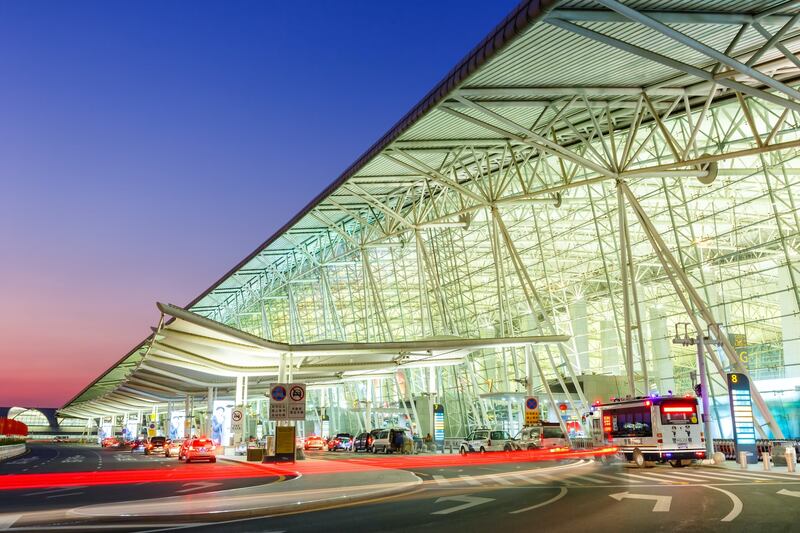
Guangzhou Baiyun International Airport in China | Source: Shutterstock
China’s New Beauty Capital
Move over, Shanghai and Beijing: Guangzhou, Guangdong province's most populous city, is rising as the country's beauty hub. Data from the Guangdong Drug Administration revealed that as of April 2019, the province housed over 2,600 cosmetics manufacturers, making up 55 percent of businesses nationwide, and more than 500,000 cosmetics store operators. Aside from Perfect Diary — China's answer to Glossier — homegrown businesses from Colorkey to Zeesea have their roots in the province, which provides brands with ample supply chain resources like raw materials and packaging. (Jiemian)
Why Superdry Fell Flat in the Mainland
The British brand has terminated its joint venture with Chinese group Trendy International following a strategic review, which will result in the closure of its 25 standalone and 41 franchise stores in the mainland. Both companies said the move was accelerated by the pandemic, but Superdry's poor performance can be traced to a failure to come up with inventive marketing initiatives and localise its offering to the market — many Chinese consumers still believe the brand is Japanese. Now that the brand has taken back full control, Chief Executive Julian Dunkerton is hopeful that shifting focus to wholesale and online channels will allow the brand to reposition itself in the market for future growth. (BoF China)
What’s New With “Guochao”
In recent years, younger Chinese shoppers have made "guochao," or a nationalistic, Chinese-infused aesthetic, the look of a generation. CBNData's latest report zooms in on the trend and how it could shift. The data revealed that online searches for "guochao" are steadily rising, with apparel making up 60 percent of consumption and "Post-"90s' shoppers driving its growth. The hottest category is currently canvas shoes, followed by sports jackets, basketball shoes and sweaters. Interestingly, "Post"-'90's shoppers are showing an affinity for old school "guochao" brands like Huili and Feiyue as well as newer labels Beaster, Tyakasha and inXX. Colour-wise, yellow, orange and brown products are doing particularly well. (CBNData)
科技与创新 TECH & INNOVATION

Smart phone with the Weibo logo | Source: Shutterstock
Weibo Gears Up to Enter Short Video Race
Sina Weibo — the social media firm behind the Chinese amalgam of Facebook and Twitter — is testing a short video app "Planet Video" to challenge the likes of Douyin, Kuaishou and more recently, WeChat. The company has attempted to break into the short video space since 2013, but its various ventures — Miaopai, SuishoupI, Pufferfish and Aidong — have received a lukewarm response. Just last week, Weibo launched new tools for professionals to manage video files and edit clips, and insiders say short videos will be the firm's top priority for the year. (Tech Post)
Luxury Brands Struggle on Douyin
Gucci made its debut on the Tiktok analogue in April, and users were not impressed. Top comments took aim at the brand's cinematography: "Just because the app is called 'shivering sounds' (the literal translation of Douyin) doesn't mean you have to shake your camera,"; others said that the brand's choice of influencers and special effects resembled that of a "knock-off fan account." Meanwhile Prada's account is relying on ambassador Cai Xukun for traffic and Saint Laurent's has failed to make much noise. Brands need to rethink their platform-specific marketing and take care when aligning themselves with influencers — initiating their own viral trends could still pay off in a big way. (Jing Daily)
消费与零售 CONSUMER & RETAIL
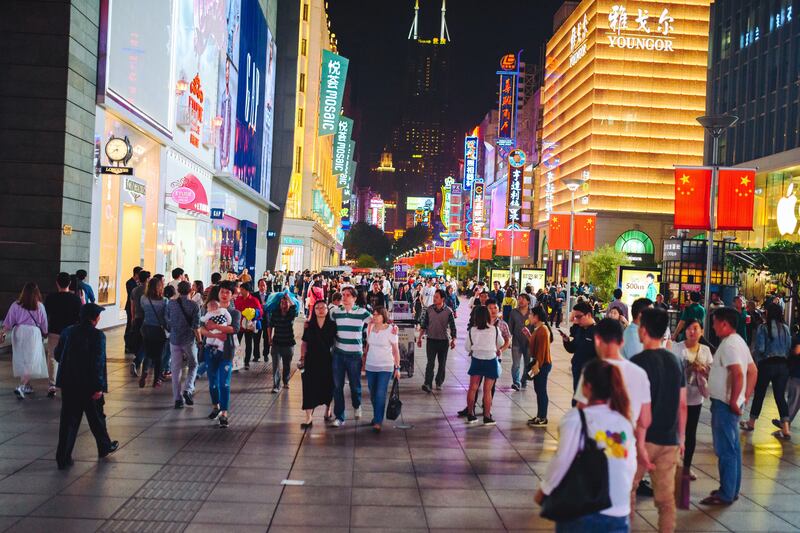
Busy shopping street in Shanghai, China | Source: Shutterstock
China’s Retail Market Surpasses the US
Having overtaken the US as the world's largest fashion and luxury market in recent years, it was only a matter of time before China claimed the top retail sector as well. eMarketer analysts did not expect this change to happen just yet, but the pandemic has since moved things along. The firm forecasts that the mainland will produce over $5 trillion in retail sales this year, compared to the US' $4.8 trillion. It estimates that the US could reclaim its top spot in 2021 and 2022, but that China will take over again afterwards. Though the trade war and Covid-19 have added to China's naturally slowing economy, its potential consumption growth still beats markets like the US, who are likely to remain crippled by the crisis for the rest of the year. (eMarketer)
Mid-Year Shopping Extravaganza Data Points to Robust Growth
The "618" shopping event — started by JD.com in 2004, though platforms like Alibaba and Pinduoduo have since hopped on the bandwagon — has always reflected China's consumer sentiment, but as Singles' Day lies months away, a barometer has never been more necessary. Last week's festivities revealed promising figures for the country's growing e-commerce market. Alibaba reported that gross merchandising volume hit $98.7 billion, while JD.com's reached $38 billion — a 34 percent increase from last year. HSBC analysts predicted that in the second quarter of 2020, Alibaba, JD.com and Pinduoduo's GMVs could grow by 32 percent, 30 percent and 110 percent respectively. (Forbes)
政治,经济与社会 POLITICS, ECONOMY, SOCIETY
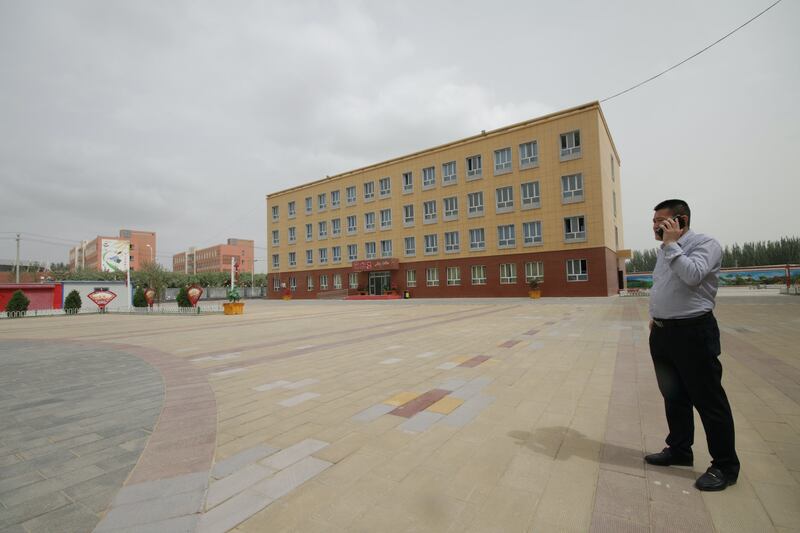
One of the "re-education" camps in Xinjiang condemned by human rights groups as indoctrination camps aimed to imprison Uighurs and other ethnic minorities.
Trump Held Off on Xinjiang-Linked Sanctions For Trade Deal
In an interview published Sunday, President Trump said that he didn't enact Treasury sanctions against Chinese officials involved with operating mass detention camps in Xinjiang to avoid interfering with the US-China trade deal. "Well, we were in the middle of a major trade deal... and when you're in the middle of a negotiation and then all of a sudden you start throwing additional sanctions on — we've done a lot," he said. Beijing still maintains that its camps, condemned by human rights groups as indoctrination camps aimed to imprison Uighurs and other ethnic minorities, serve vocational and training purposes and that people are living in them of their own volition. (Axios)
Chinese Among Welcomed Travellers When EU Borders Reopen
EU diplomats are weighing plans that would only allow a limited number of countries to restart flights with the bloc. Criteria was discussed on Wednesday, but is expected to require countries' infection rates to be below the EU's average. This system would prevent travel from countries like the US, Brazil and North Macedonia, while travel to and from China would be permitted. Travel with around 50 countries could restart as the EU seeks to lift travel restrictions from July 1. (Politico)
China Decoded wants to hear from you. Send tips, suggestions, complaints and compliments to our Shanghai-based Asia Correspondent casey.hall@businessoffashion.com.
With consumers tightening their belts in China, the battle between global fast fashion brands and local high street giants has intensified.
Investors are bracing for a steep slowdown in luxury sales when luxury companies report their first quarter results, reflecting lacklustre Chinese demand.
The French beauty giant’s two latest deals are part of a wider M&A push by global players to capture a larger slice of the China market, targeting buzzy high-end brands that offer products with distinctive Chinese elements.
Post-Covid spend by US tourists in Europe has surged past 2019 levels. Chinese travellers, by contrast, have largely favoured domestic and regional destinations like Hong Kong, Singapore and Japan.